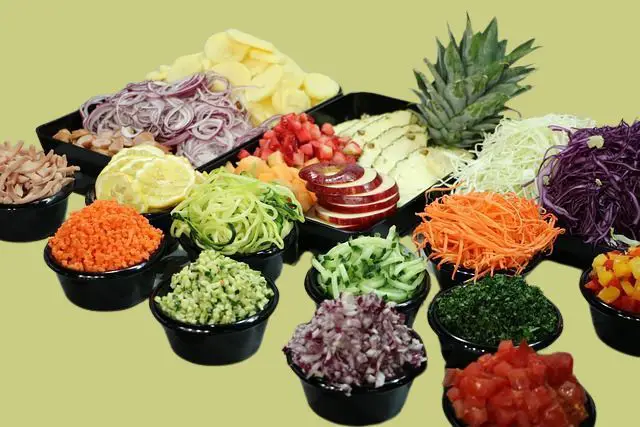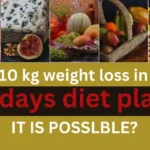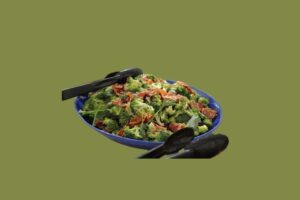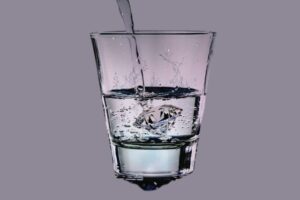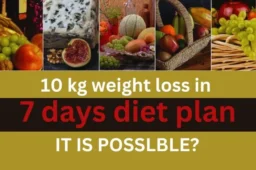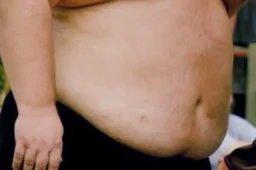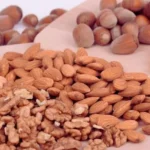Dieting Chart for Weight Loss
A dieting chart for weight loss provides a structured eating plan to help shed pounds. It typically outlines meals, portion sizes, and nutritional balance.
Embarking on a weight loss journey often begins with understanding nutrition and the importance of a balanced diet. A diet chart offers a visual roadmap, sketching out nutritious food choices for breakfast, lunch, dinner, and snacks throughout the day. This personalized guide helps manage calorie intake while ensuring the body receives essential nutrients for optimal health and energy levels.
It’s a tool designed to promote sustainable weight management by fostering healthy eating habits. The effectiveness of a diet chart lies in its ability to be tailored to individual needs, taking into account factors such as age, gender, weight, and activity level, all while maintaining an easy-to-follow structure that can be integrated into daily life.
Setting The Stage Dieting Chart For Weight Loss
Before embarking on a weight loss journey, understanding your current eating habits is key. Take the time to record what you eat and drink daily. It will help reveal patterns or behaviors that could hinder weight loss. Be honest and thorough for a true assessment. Your notes should include meal sizes, snack frequency, and beverage choices.
Defining clear weight loss objectives is crucial. Goals give direction and motivation, making it easier to stick to the diet chart. Goals should be specific and realistic; for example, aim to lose 1-2 pounds per week. Recall that little triumphs along the road are crucial to long-term achievement.Essentials Of A Weight Loss Diet
Losing weight means eating less than your body uses. This creates a caloric deficit. A good diet has the right balance of proteins, fats, and carbohydrates.
Proteins build and repair your body. They can also help you feel full. Fats are important for health but should be eaten in moderation. Carbohydrates give you energy. Choose whole grains for better health.
To lose weight, eat various foods but in smaller amounts. Remember, drinks can have many calories too.
Breaking Down The Dieting Chart
Sample meal plans are crucial for a successful weight loss journey. A balanced dieting chart includes various food groups in the right proportions. Consider incorporating meals packed with fruits, vegetables, lean proteins, and whole grains. For breakfast, mix oats with berries and honey. Lunch could be a chicken salad with a variety of greens. For dinner, try grilled fish with steamed broccoli and quinoa.
Ensuring correct portion sizes plays a pivotal role in shedding pounds. Consume smaller, more frequent meals to boost metabolism. Stick to fist-sized servings for carbs and palm-sized for proteins. Timing your meals can also help manage hunger. Eat every three to four hours to maintain energy levels. Remember to drink plenty of water throughout the day.
Nutrition-dense Foods To Include
Focusing on nutrition-dense foods is key for weight loss. Your plate should have a rainbow of vegetables and fruits. These provide vitamins, minerals, and fiber without too many calories. Each meal must include a variety of these to ensure a balanced intake.
Lean proteins, like chicken, fish, and beans, support muscle maintenance and growth. They also keep you feeling full longer. Whole grains, such as brown rice and quinoa, are rich in nutrients and beneficial for digestion. They trump white bread and pasta, which lack essential fibers.
Managing Cravings And Snacks
Snacks can be both tasty and healthy. Picking the right ones is key. Choose fruits, nuts, or veggies for a quick, nutritious bite. Pack carrot sticks or apple slices for a crunchy snack. Opt for greek yogurt or hummus to keep you full.
Anxiety or depression may cause an increase in appetite. Recognize your emotions. Take a walk or sip some water. Talk to a friend or jot down what you feel. This can help you stop emotional eating. Remember, snacks are not bad. Just make sure they are part of your weight loss diet chart.
Hydration And Weight Loss
Staying hydrated plays a crucial role in weight loss. Drinking ample water boosts metabolism. It helps you feel full, thus reducing hunger. Every day, try to have eight 8-ounce glasses at minimum. This is often called the “8×8” rule and is easy to remember.
Beyond water, certain beverages can support your goals. Green tea, with antioxidants, aids fat burning. Black coffee, in moderation, can increase calorie burn. Both drinks should be taken without added sugars. Cinnamon or lemon in water can also benefit metabolism. These are smart choices for a weight loss diet.
| Beverage | Benefits | Recommended Intake |
| Water | Increases fullness, aids in fat breakdown | 64 ounces daily |
| Green Tea | Contains antioxidants, promotes fat loss | 2-3 cups daily |
| Black Coffee | Boosts metabolism, energy without calories | 1-2 cups daily |
| Lemon Water | Improves digestion, enhances hydration | As desired |
| Cinnamon Infused Water | Regulates blood sugar, boosts metabolism | As desired |
Integrating Physical Activity
Integrating physical activity into your daily routine enhances the effectiveness of your dieting chart. Actions such as walking, running, and swimming are great for burning calories. These activities increase your metabolism.
Each workout should be fun and fit your body’s needs. Cardio exercises are super for losing fat. Strength training helps in building muscle. Always remember to match your exercise to your diet goals.
| Type | Activity | Benefit |
| Cardio | Running, Cycling | Burns fat |
| Strength | Weight lifting | Builds muscle |
| Flexibility | Yoga, Stretching | Increases mobility |
| Balance | Tai Chi | Improves stability |
Monitoring Progress And Adjustments
Tracking weight and body measurements is key to understanding progress. Consistently noting these stats typically is needed. Use a scale and measuring tape once a week. This helps you see changes in your weight and shape.
Making adjustments to your diet is necessary if results stall. Eat a variety of food to get all nutrients. Cut down on sugars and processed foods. Increasing water intake and fiber can aid in weight loss. Be sure to balance proteins, carbs, and fats.
Add more rows as needed
| Week | Weight | Chest | Waist | Hips |
| 1 | 180 lbs | 40 in | 32 in | 42 in |
| 2 | 178 lbs | 39 in | 31.5 in | 41.5 in |
Common Pitfalls In Dieting
Fad diets often promise quick weight loss results. Sadly, they are not effective for long-term health. Many times, these diets restrict important nutrients, leading to health problems. Quick fixes can be tempting, but they don’t teach sustainable eating habits.
Sustainability is key to successful dieting. A good diet should include a variety of foods. It helps maintain balance and nourishment. People feel tired or bored with rigid diets. This feeling is called diet fatigue. It makes sticking to a diet very difficult. A successful diet should fit into a person’s lifestyle. This makes it easier to follow for a long time.
Dieting Chart for Weight Loss Support And Motivation
Building a strong support system is key to successful weight loss. Engage with friends who share your health goals. Join online communities or local groups for extra encouragement. Celebrate your progress together, making the journey enjoyable and less isolating.
Although they can be upsetting, weight reduction plateaus are a common occurrence during the process. During these times, focus on non-scale victories like how your clothes fit or increased energy levels. Set small, achievable goals to keep momentum. Persistence is your greatest weapon against plateaus. Remember, each small success is a step towards your ultimate target.
Long-term Strategies For Maintaining Weight Loss
Maintaining weight loss is a commitment to a healthy lifestyle. Focus on incorporating daily exercise and movement into your routine. Eating plenty of fruits, vegetables, and whole grains is key. Remember that portion control helps in managing calorie intake. Establish a regular sleep schedule to aid appetite regulation. By setting realistic goals, you can prevent discouragement. Build a strong support system to stay motivated. Tracking progress through a journal or app can be helpful. Permanent lifestyle changes take time, so be patient with yourself.
Engaging in mindful eating can make a big difference. It involves paying attention to hunger cues and savoring each bite. Avoid distractions like TV and phones during eating.This allows you to enjoy your food and promotes satisfaction with smaller portions. Making mindful choices leads to better food selection and reduced snacking.
Conclusion: The Journey Beyond The Chart
Achieving weight loss is more than following a chart. It involves deep commitment to altering daily habits. Consistent behavioral changes make the true difference. Eating mindfully and staying active are keystones. Integrating small, healthy habits leads to lasting results.
It’s vital to evolve with the journey. Embracing new knowledge about nutrition and exercise makes improvement possible. An open mind for trying varied routines or diets aids in finding what works best. Self-education is a continuous process in the weight loss journey.
Frequently Asked Questions On Dieting Chart For Weight Loss
Which Diet Plan Is Ideal for Losing Weight?
The best diet plan for weight loss is tailored to individual needs, focusing on whole foods, balanced nutrients, and calorie control. Consulting a nutritionist ensures a plan that’s effective and sustainable, combining healthy eating with regular exercise for optimal results.
What Is A Healthy Eating Schedule For Weight Loss?
A good weight loss eating routine includes balanced meals, prioritizes portion control, and favors whole foods over processed ones. Add nutritious grains, fruits, and veggies together with lean proteins. Stay hydrated and limit sugary drinks. Consistency in healthy eating is key for shedding pounds effectively.
What Is The Best Diet To Lose 20 Pounds In A Month?
Losing 20 pounds in one month is extreme and generally not recommended. For safe weight loss, aim for 1-2 pounds per week by adopting a balanced, calorie-restricted diet rich in vegetables, lean proteins, and whole grains combined with regular exercise.
Always consult a healthcare professional before starting.
What Should I Eat To Lose 2 Pounds A Week?
To lose 2 pounds a week, consume a balanced diet with a calorie deficit. Focus on vegetables, lean proteins, whole grains, and fruits. Drink plenty of water and avoid high-calorie, sugary foods.
Conclusion
Embracing a dedicated dieting chart can significantly streamline your weight loss journey. It’s a roadmap to better health, leading to lasting change. Remember to consult with a nutritionist and adjust as necessary, ensuring it complements your lifestyle. Start today – a healthier you awaits!
